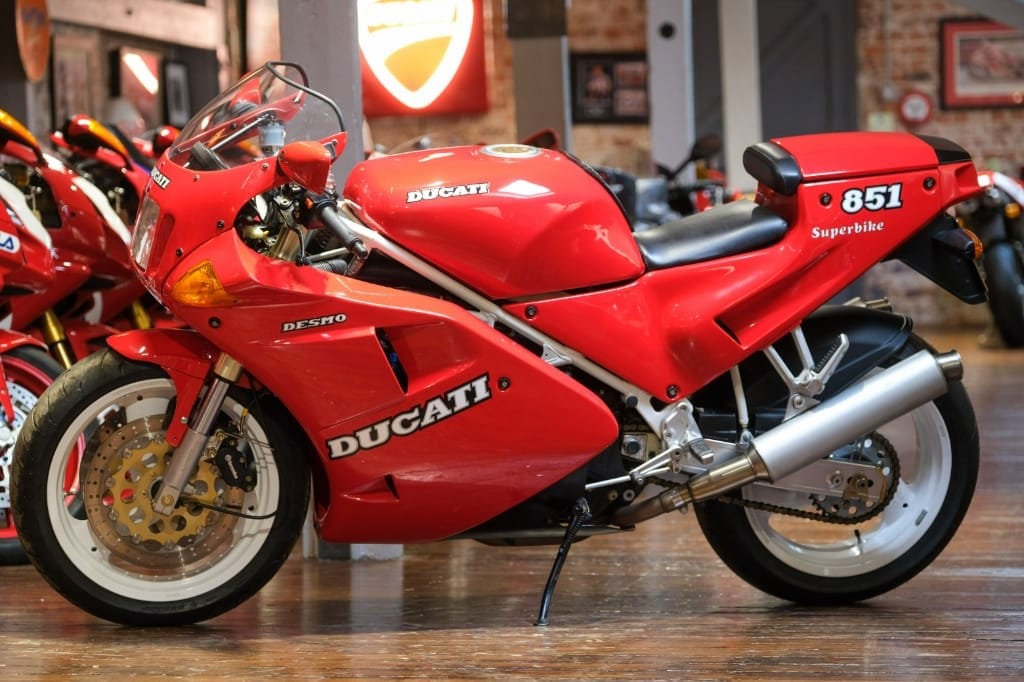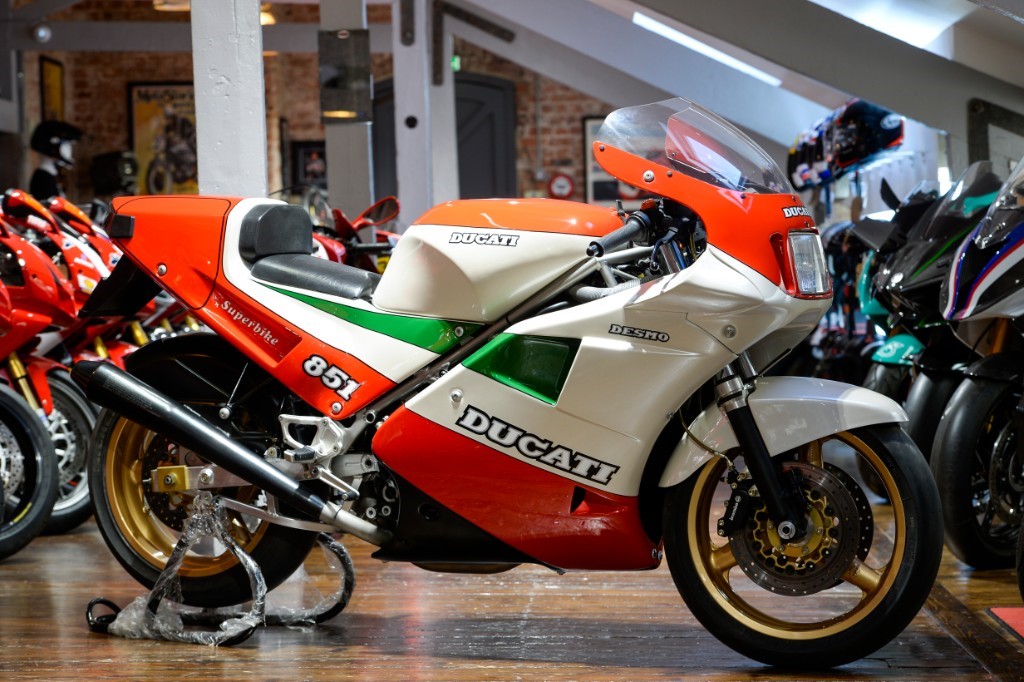Modern Classic: Ducati 851
The late 1980s and early 1990s was a time when superbike manufacturers were locked in an ongoing battle to outclass each other. So far, Footman James has remembered three icons from Japan, including the 1994-96 Kawasaki Ninja ZX9R, the 1987-94 Yamaha FZR1000 and the 1992-95 Honda CBR900R Fireblade.
Italy’s Ducati was another early contender in the battle with its Ducati 851. A race prototype that was not too dissimilar to the production model, ridden by Marco Lucchinelli, won the 1987 Daytona Battle of the Twins race, which stood the single-seater 851 in good stead for being a one of the best superbikes of its generation.

Image credit: The Bike Specialists
In the lead up to its introduction, it’s fair to say that Japanese manufacturers were dominating the marketplace. A struggling Ducati was bought out by fellow Italian manufacturer Cagiva in 1985, and development of a new, world-beating machine commenced, using Ducati’s existing Pantah 90° V-twin engine design, which had seen success on the racetrack propelling the Ducati 750 F1.
Using the Pantah’s bottom end, a new ‘Desmoquattro’ design added liquid cooling, fuel injection, and desmodromic four valve heads with a valve angle of 40 degrees. Despite engineers from UK race engine builder Cosworth advising their reservations of the design, the four-valve desmodromic engine continues to feature in all liquid-cooled Ducatis today.

Image credit: The Bike Specialists
Buyers could soon order one of 500 road-going examples of the 851 in 1988, either specifying it in Strada (road use) or in Kit (racetrack) guises in red, white and green ‘Tricolore’ colours. Meanwhile, Ducati, keen to revive its name and be part of the inaugural 1988 World Superbike championship, rushed to assemble the 200 Kit examples required by homologation rules.
Ducati had refreshed its image with the 851 Kit, but early Strada versions were criticised by the press for poor handling, thanks to a smaller 16-inch front wheel and no changes to the geometry of the bike’s frame. All 1989 model year 851s had 17-inch front wheels and featured the now-iconic red paintwork, as seen on some of the most special Ducati superbikes ever since.
The updated 851 had an accurate throttle response, as well as a wide band of power and torque, and could now compete in the corners. But what is the 851 like to ride and what are they like to own? To find out, Footman James gained the view of Sheffield-based motorcycle dealer James Holland, owner of The Bike Specialists.
“Classic Ducati 851s might not be the best superbikes in the world, but they have more soul and remain extremely desirable and collectable. Any 851 or 888 has a heavy clutch and throttle, as well as a different power delivery from its big V-twin. But when you master it, it’s so rewarding because it teaches you how to become a better rider.
“Parts supplies remain strong but watch out for leaking fork seals and the need for clutch replacements. These have normal rattly sounding dry clutches, which can alarm the uninformed buyer. Despite the performance capabilities, these older bikes still need to be treated with respect like a classic car and should be warmed up properly before setting off.
“An 851 SP5 remains the ultimate version to seek out and is to the superbike world what the Ferrari F40 is to supercars. Given the success the 851 had in racing, all versions are worth sourcing, but reliability issues when new mean that the very best examples are worth seeking out today.”
What are your memories of the Ducati 851? Let us know if you have one as your pride and joy. We've love to hear about your experiences in the comments below!

COMMENT